Dynamic
Range:
Unveiling the Invisible 9th Passenger
Aboard the Nostromo
—
Words by Bruno Santos aka Cleymoore
Reading time: 16 minutes
This is an essay on the role of sound and music in our inherent perception of fantasy films, taking 1979’s “Alien” as the main subject.
Although the article contains no spoilers, at least one viewing of the movie is recommended before reading.
Celebrated and admired throughout history, cinema is a peculiar but expansive source of both wonder and outstanding inspiration. Being exposed to a world different from our own can be a mesmerizing experience, one that has the power to influence entire generations. Audio-visual experiences that transcend time & space.
Consider the Science Fiction genres: We were used to marveling at a reality that was different from ours, but ever since we landed on the Moon in 1969 our cinematic depictions of space started to seem ever more uncanny. Back in 1979, the science-fiction horror film “Alien” directed by Ridley Scott and written by Dan O’Bannon hit the cinemas with moderate success. Dubbed “Alien: The 8th Passenger”, it follows the crew of the commercial spacecraft Nostromo, who encounter the now-iconic Alien, a deadly and primal extraterrestrial being, in an unknown planetoid after receiving a distress signal. It was undoubtedly the most terrifying film I’ve experienced during my childhood.
Fast-forward to 2020, and SpaceX is also shooting people into space in a commercial aircraft, and I can’t help but wonder how familiar it all seems. But science-fiction is a hefty topic. Instead, I want to explore and dissect the role of sound and music in our inherent perception of fantasy films and explore why “Alien” was, and still is, a terrifying Sci-Fi tale.
Alien is a film about primal fear – namely, the fear of the unknown – and every character and set piece in it has a life of its own. The visual aesthetics adopted by Ridley Scott for the spacecraft Nostromo and its interiors are quite grim: Massive engines and weirdly shaped structures, hulking pieces of unstylish sharp metal, long dark corridors, hanging chains everywhere as if looking into metal gibbets, bizarre hypersleep gear and obsolete CRT display screens. These are shockingly contrasted by bleak interior design structures of the purest white, reminiscent of the sterility found in most of “2001 Space Odyssey” spaceship scenes, providing a powerful dynamic range to its visuals. The look and feel of the planetoid LV-426, The Derelict and the ominous Alien itself were all H.R. Giger’s creations. The interior of the Derelict, by comparison, resembles more a living organism than a spacegoing vessel, with bony walls, circular gangways, narrow passages, and extremely sexual undertones.
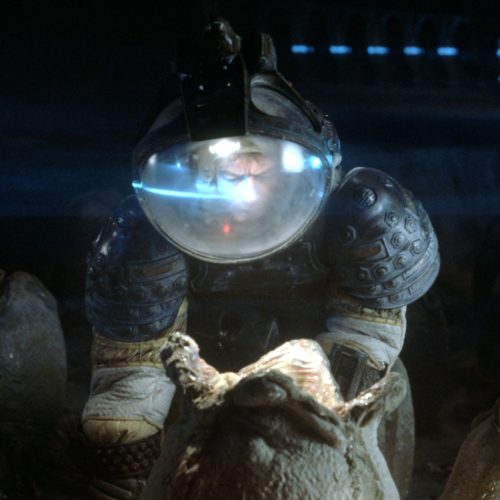





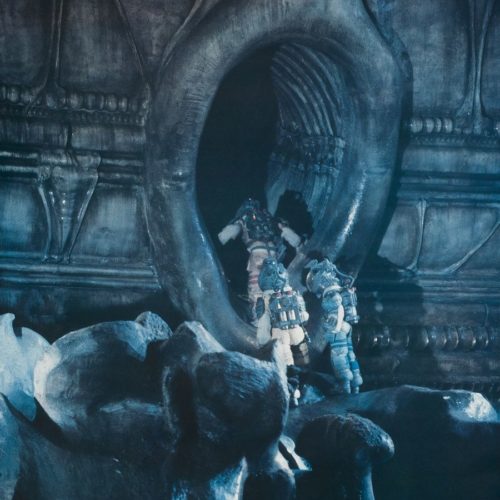


“every character and set piece in it has a life of its own”
Giger’s perversion over nature and matter echoes throughout the entire film, and it’s arguably one of its most unsettling elements. It’s also a quite visceral film, depicting violence that’s not only graphical but also profoundly symbolical: there’s allusions of rape in the Alien’s highly sexualized attacks or the Facehugger’s forced impregnation, grotesque depictions of childbirth agony in the famous Chestburster scene, and nods to extreme sexual transfiguration in the Alien’s visual motifs and artefacts, often shifting the whole setup to the Freudian realm. But there’s another element in particular that drives this discomfort to new heights: the sound, and it’s outstanding dynamic range.
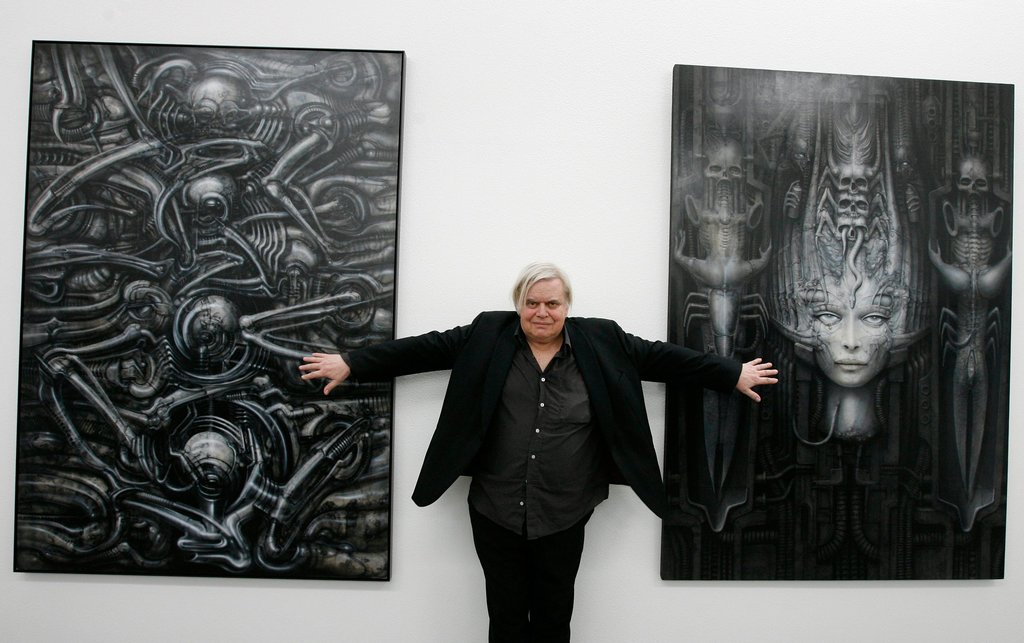
H. R. Giger in Chur, Switzerland, in 2007 with his very recognizable paintings.
Composed by Jerry Goldsmith, Alien’s soundtrack is one of the most chillingly effective horror scores in film history, and most likely one of his most outstanding achievements. From the ghostly trumpet & flute melodies of its central theme to the sleek, spine-tingling textures and long-decaying echoes of its most suspenseful arrangements, Goldsmith’s craft relies on a carefully executed orchestration to full effect. It juxtaposes the cold emptiness of space with its stellar, awe-inspiring beauty.
Although, Jerry Goldsmith didn’t precisely score Alien’s opening credits as heard in the film. His take on the opening credits was a much calmer, romantic take on the vastness of space and its alluring grace – miles away from the straightforward and obscure version you hear in the film, which carries a slightly menacing and dissonant tone. Goldsmith originally intended these incongruous moments to be used later in the movie. Still, Ridley Scott and editor Terry Rawlings decided the film needed to convey horror right from the start. Which of the two opening themes was more appropriate? I think it boils down to cinematic taste or vision. The rather romantic motif, classically composed in glorious harmony that subverts the audience slightly; versus the horror inducing theme, focused on 2 major/minor chords played back & forth in a hexatonic scale, which amongst ghastly textures evokes instant dread.
Alien’s bony-chilling opening sequence is drenched in mystery and an overwhelming sense of dread.
Regardless of its brilliance and/or effectiveness, the music editing process of the film was, in fact, a complete disaster, and suffered from a colossally controversial post-production stage. From temp tracking to the final piece, both director and editor saw fit to chop Jerry Goldsmith’s music into bits and pieces, and even replacing it with cues from other scores he composed in the past, specifically 1962’s pseudobiographical movie “Freud”. Goldsmith’s ending theme for “Alien” was also, quite pointlessly, replaced by Howard Hanson’s opus “Symphony No. 2 – Romantic“.
But however badly his work was treated, the effect of the final score on one’s psyche is quite a nerve-wracking, unforgettable experience. And while it may not quite compete with the Satanic heights of the composers score to “The Omen”, which was the composer’s only Oscar thus far, Alien’s sound structure conveys a very unique horror in itself. One that is both familiar and otherwordly, often blurring the lines between music score and diegetic sound (sound fx/foley). It expands our understanding of the world within the film itself in a game of tone and contrast.
“A score without a range of different moments and moods will more often than not result in a movie soundtrack that has little to no dynamic range.”
And while the theme of science fiction concerns a grasp of the known, horror is usually defined by the human struggle with the unknown and our quest to survive horrifying circumstances. Unless, of course, we talk about the likes of Jordan Peele and his cinematic depiction of real-life social horrors. Music in horror films plays an extremely critical role in establishing the requited amount of mystery, trepidation, and fear. In conventional horror movies, this seems quite a straightforward task, but when the mysterious beauty of space is a character on its own, quietness plays a fundamental role. That’s where the dynamic range of sound becomes extremely important, and an indispensable tool for emotional support.
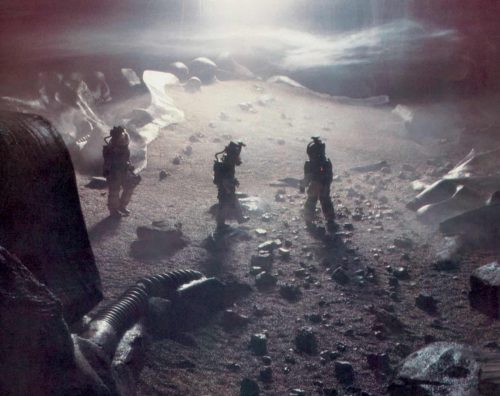
In cinematic photography, the dynamic range is the difference between the darkest and lightest tones of a scene, what one might consider pure black and pure white. In sound, it describes the ratio between the quietest and the loudest noise in a musical instrument, musical arrangement or piece of electronic equipment.
A score without a range of different moments and moods will more often than not result in a movie soundtrack that has little to no dynamic range. Alien is a beautiful example of a soundtrack that has been carefully designed to have moments of calm quietness, often evoking a mixture of fear and awe, versus moments of intense action that result in high volume sound, music and dialogue.
It creates a structured experience, and the audio-visual dynamics grow from these structures as well, building the intensity of a moment before that specific intense moment actually occurs, driving the audience. Junji Ito comes to mind: page after page of his mangas usually grow slowly in tone and dread, only to deliver enormous shocks or to drop the reader into the uncanny valley after a simple page turn. Using such dynamics, he subdues the reader, and masterfully controls the narrative.

From right to left, the masterful subdued shocks of Shunji Ito.
Most of the film’s alien settings use quietness as a tool to elevate its otherwordly sounds and enable razor-sharp emotional manipulation. Long moments of calm allow clarity and provide the space and headroom needed for delicate gain staging, from the quietest wind to the loudest echo of strings and drums. These elements ebb and flow in a very dynamic and organic manner, and inject subconscious themes of gripping bodily invasion, attack and infection. But there’s a constant melodic cue that cuts through the film, evoking different emotions depending on its tempo, volume or tone.
Goldsmith’s known to employ flexible secondary motifs in addition to the central theme by using smaller repeated musical statements throughout the whole score and in Alien there are specific timbres and melodies recurrently recalled. Virtually every cue has a life of its own that is born from the same core, something which assists the score’s musicality and motion. The Alien’s leitmotif, the 2-note and sometimes 3-note flute arrangement, is a constant: it continually reminds you everything alien, and the fact that it’s employed in its most introspective moments mutates it into something all the more terrifying.
“Long moments of calm allow clarity and provide the space and headroom needed for delicate gain staging”
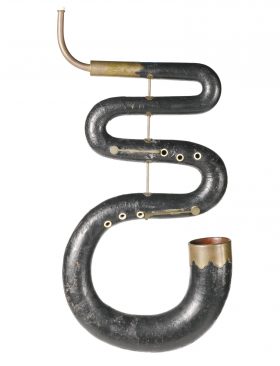
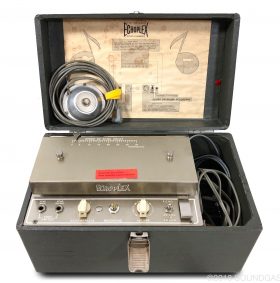
The scoring on LV-426 and the discovery and subsequent investigation of The Derelict ship is a great sonic representation of everything Alien. Goldsmith used his familiarity with acoustic and electronic elements to create an engaging atmosphere of atypical nature. The famous “alien wind” effect was generated using the Indian instrument Shankha run through the Echoplex tape delay machine – an industry standard for this effect at the time and the successor to the EchoSonic, one of the earliest magnetic tape delay & amplifier machines from 1959. Cues like “The Alien Planet” and “The Shaft” are an accurate depiction of incoming horror and aggressive action through the innovative use of echoes and reverbs on its orchestral and percussive parts.
To create the sound for the alien and its world, Goldsmith used an array of intriguing instruments, including a Didgeridoo, original from the Australian Aboriginal tribes, and the Serpent, a unique wind instrument originally from France that resembles a giant snake – and a distant ancestor of the modern tuba. Goldsmith also used detuned wind and string effects to convey stress (influenced by Polish composer Krzysztof Penderecki). The wise use of magnetic tape delays on drums or these unusual instruments represents the terror of the unknown world and its ominous central creature.
Some pieces like “Facehugger” or “Breakaway” demonstrate some of the composers most aggressive and challenging writing, making full use of the dynamic range by carefully mixing foley with instrumentation under precise volume shifting. These quiet moments contrasted by nervous sounds very quickly break-the-nerve of the listener and subconsciously implant ideas of severe aggression. It becomes a very feral experience.
Understanding dynamic range is key to achieving a good sound, just like understanding contrast is key to achieving the right image. Goldsmith’s soundtrack has vast differences between the loudest peaks in its cues and its quietest sounds, resulting in a very unique dynamic range – one that eventually requires a specific sound system to fully enjoy.
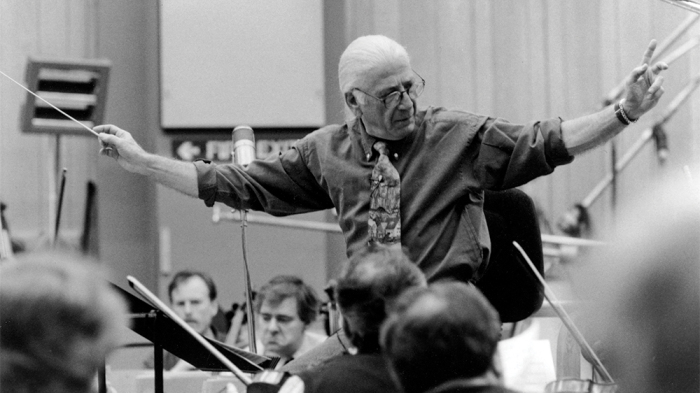
“Understanding dynamic range is key to achieving a good sound, just like understanding contrast is key to achieving the right image.”
Considering the cinema nowadays is becoming more and more a living-room thing, such a soundtrack could feel either too loud or too quiet at times, primarily when heard in smaller sound systems / TVs. If we were to apply severe levels of compression to the soundtrack to achieve higher volume and a shorter frequency window we would gain an overall feeling of increased ‘loudness’ and virtually making it sound better in such environments. At the same time, loud moments would be toned down, and quietness wouldn’t be so mysterious, severely impacting the whole emotional articulation of all its parts.
I do believe, although, that such a score wouldn’t be nearly as dynamic nowadays; this is mostly due to the approach most current musicians and audio engineers have towards volume. The loudness range of the sound before mastering or even mixing has increased at the same time as compressing/limiting has been getting more dramatic, a tendency born out of the stylistic changes in music during the era of the ‘loudness war’ — aka the ’90s. This quest for volume became an industry standard, with platforms like Spotify employing Loudness Normalization with the use of digital limiter algorithms that quite often break the dynamic range of a track. These platforms state louder tracks have often been cited as sounding better to listeners, so normalization was employed to avoid unfair advantage between songs with different volumes or dynamic ranges.
“The loudness range of the sound before mastering or even mixing has increased at the same time as compressing/limiting has been getting more dramatic.”
I’m often puzzled by such perceptions of loudness and sound quality in music. They make me wonder if, for instance, ambient music mixes should be mastered or normalized. Virtually everyone would be able to listen to it clearly, even on lo-fi speakers, and accessibility should be a concern. But moments in the mix that should ebb and flow, be it in emotion or volume, would probably be spoiled and taken miles away from the original intentions of its creator.
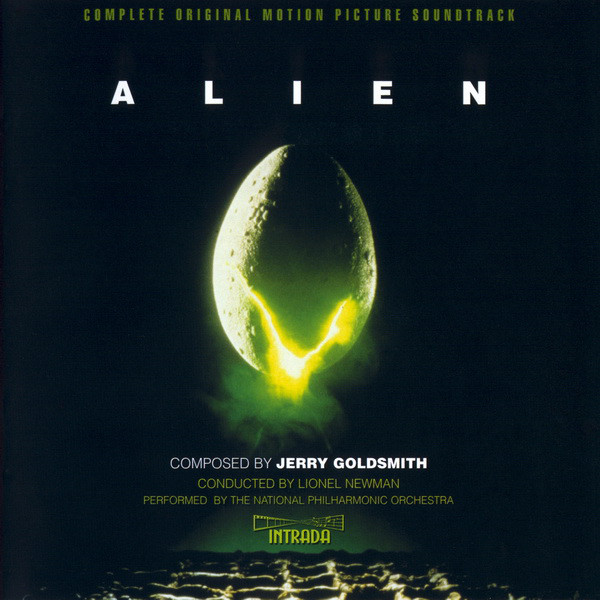
In 2017, Mondo re-issued Alien’s OST in a gorgeous special edition 4xLP package that included both Goldsmith’s original vision and Scott’s edits, transferred, remastered and restored from the original multi-track tapes, and its native dynamic range impeccably preserved. But, however remarkable, the original soundtrack album, also re-issued by Mondo, remains the best way to listen to the score as envisioned by the composer: an utterly authentic soundscape of atonal motifs bookended by its Romantic theme. It elevated the original material from overblown b-movie to interstellar artistic heights and serves even today as a perfect example of pioneering sonic artistry full of character, where its details and dynamics make it a character of its own — the 9th passenger aboard the Nostromo.









